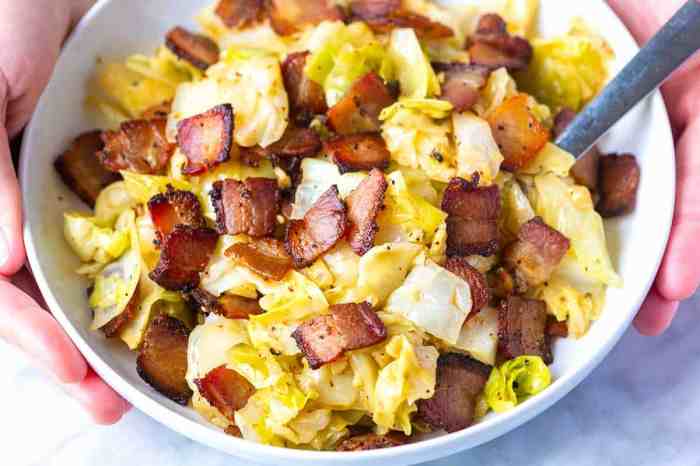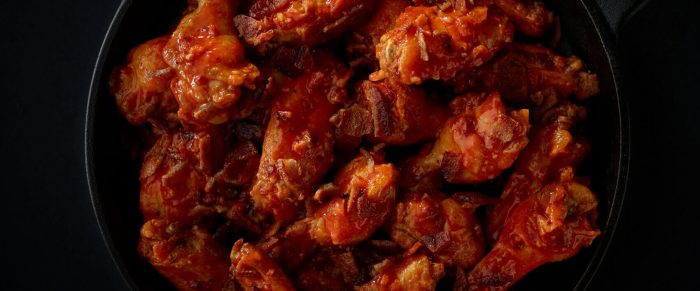Bacon Sauce Recipe A Culinary Guide
Understanding Bacon Sauce: Bacon Sauce Recipe

Source: inspiredtaste.net
While a rich bacon sauce recipe might seem worlds away from desserts, the sweetness of certain sauces can surprisingly complement savory dishes. Consider the balance of flavors; for a contrasting yet harmonious dessert, you might explore a completely different recipe, such as this delightful apple sauce pie recipe. Returning to our bacon sauce, remember that experimentation with complementary sweetness can elevate its overall taste profile.
Bacon sauce, a culinary delight, elevates dishes with its rich, savory, and smoky flavor profile. This versatile condiment can transform simple meals into gourmet experiences. Its appeal lies in the balance of salty bacon, creamy richness, and often a subtle tanginess. This exploration delves into the nuances of bacon sauce, encompassing its characteristics, variations, preparation, and applications.
Bacon Sauce Characteristics and Types, Bacon sauce recipe
A good bacon sauce possesses a harmonious blend of smoky bacon flavor, a pleasingly thick consistency, and a balanced seasoning profile. It should be neither too greasy nor too thin, maintaining a luxurious mouthfeel. Variations abound, ranging from creamy and mild to intensely smoky and spicy. Creamy bacon sauces often incorporate heavy cream or crème fraîche, while smoky versions emphasize the bacon’s inherent smokiness.
Spicy bacon sauces might include chili flakes, cayenne pepper, or a dash of hot sauce. Key ingredients typically include cooked bacon, a fat source (butter, cream, or oil), and a thickening agent (flour, cornstarch, or reduced liquid). Bacon itself contributes its signature smoky saltiness, while the fat adds richness and creaminess. A thickening agent ensures the desired consistency.
Worcestershire sauce or other savory additions provide depth and complexity.
Bacon Sauce Recipe Variations

Source: hormel.com
Several recipes demonstrate the versatility of bacon sauce. The following table compares three distinct approaches, showcasing the range of flavors and techniques achievable.
| Recipe Name | Key Ingredients | Cooking Method | Flavor Profile |
|---|---|---|---|
| Classic Creamy Bacon Sauce | Bacon, butter, heavy cream, flour, Worcestershire sauce | Stovetop | Rich, creamy, savory, slightly tangy |
| Smoky Maple Bacon Sauce | Bacon, maple syrup, brown sugar, apple cider vinegar, smoked paprika | Stovetop | Sweet, smoky, tangy, slightly spicy |
| Spicy Jalapeño Bacon Sauce | Bacon, jalapeños, butter, cream cheese, lime juice, cayenne pepper | Stovetop | Spicy, creamy, savory, zesty |
Below are recipes for a thick and rich sauce, a lighter alternative, and a vegan option.
Thick and Rich Bacon Sauce Recipe
This recipe prioritizes a luxuriously thick and rich sauce, ideal for drizzling over steaks or pasta.
- 6 slices bacon, cooked and crumbled
- 2 tablespoons butter
- 2 tablespoons all-purpose flour
- 1 cup heavy cream
- 1 tablespoon Worcestershire sauce
- Salt and pepper to taste
Lighter Bacon Sauce Recipe
This recipe focuses on reducing fat and calories while maintaining a delicious bacon flavor.
- 4 slices bacon, cooked and crumbled
- 1 tablespoon olive oil
- 1 tablespoon cornstarch
- 1/2 cup half-and-half
- 1 teaspoon Worcestershire sauce
- Salt and pepper to taste
Vegan Bacon Sauce Recipe
This recipe uses plant-based alternatives to create a bacon-like flavor without animal products.
- 1 cup smoked tempeh, crumbled
- 1 tablespoon olive oil
- 1 tablespoon nutritional yeast
- 1/2 cup plant-based milk (e.g., soy or almond)
- 1 teaspoon liquid smoke
- 1 teaspoon soy sauce
- Salt and pepper to taste
Bacon Sauce Cooking Methods and Techniques
Bacon sauce can be prepared using several methods, each offering subtle variations in texture and flavor. Stovetop preparation is the most common, offering precise temperature control. Oven methods allow for even cooking, and blending can create a smoother sauce. Proper temperature control is crucial to prevent scorching or clumping. Overheating can lead to a grainy texture, while underheating might result in a runny consistency.
If the sauce becomes too thick, add a bit more liquid; if too thin, simmer uncovered until it thickens.
Stovetop Bacon Sauce Method
- Cook bacon until crisp, remove and crumble, reserving bacon fat.
- Melt butter or oil in the same pan.
- Whisk in flour to create a roux.
- Gradually whisk in cream or milk, ensuring no lumps form.
- Simmer until thickened, stirring constantly.
- Stir in Worcestershire sauce, crumbled bacon, and seasonings.
- Adjust seasoning to taste.
Serving Suggestions and Pairings
Bacon sauce’s versatility makes it a perfect complement to a wide array of dishes. It enhances the flavor of burgers, fries, grilled meats, and pasta dishes. It can be used as a dip for vegetables or chips. Garnishes such as chopped chives, parsley, or a sprinkle of bacon bits enhance both presentation and taste. For pasta dishes, toss the sauce with cooked pasta and add some grated Parmesan cheese.
For burgers, use it as a topping, similar to a burger sauce. Pizza can be enhanced with a bacon sauce base or as a topping.
Bacon Sauce Ingredients and Substitutions
While bacon is the star ingredient, substitutions exist for other components. Thick-cut bacon provides a richer flavor compared to thinner cuts. Canadian bacon offers a milder, sweeter taste. If omitting bacon, smoked paprika or liquid smoke can mimic the smoky flavor. Cream can be replaced with milk or yogurt, and Worcestershire sauce with soy sauce or tamari.
Alternative protein sources like mushrooms or lentils, when properly seasoned, can create a savory, bacon-like base for a vegan sauce.
Visual Representation of Bacon Sauce
A well-made bacon sauce exhibits a rich, deep amber color, possibly with visible flecks of bacon. The texture should be smooth and creamy, yet thick enough to coat the back of a spoon. The aroma is intensely savory, with a pronounced smoky scent interwoven with the creamy undertones of the dairy or plant-based alternatives. A hint of Worcestershire sauce or other seasonings adds layers of complexity to the overall olfactory experience.
The smell should be enticing and appetizing, promising a rich and flavorful experience.
Questions Often Asked
Can I make bacon sauce ahead of time?
Yes, bacon sauce can be made ahead of time and stored in the refrigerator for up to 3 days. Allow it to cool completely before storing.
What type of bacon is best for bacon sauce?
Thick-cut bacon generally works best, providing a richer flavor and better texture. However, you can experiment with other types like smoked or Canadian bacon.
How can I thicken my bacon sauce?
If your bacon sauce is too thin, you can thicken it by simmering it uncovered for a longer time to reduce the liquid. Alternatively, a cornstarch slurry (cornstarch mixed with cold water) can be added and stirred in while simmering.
Can I freeze bacon sauce?
Yes, bacon sauce can be frozen for up to 2 months. Allow it to thaw completely in the refrigerator before using.





















